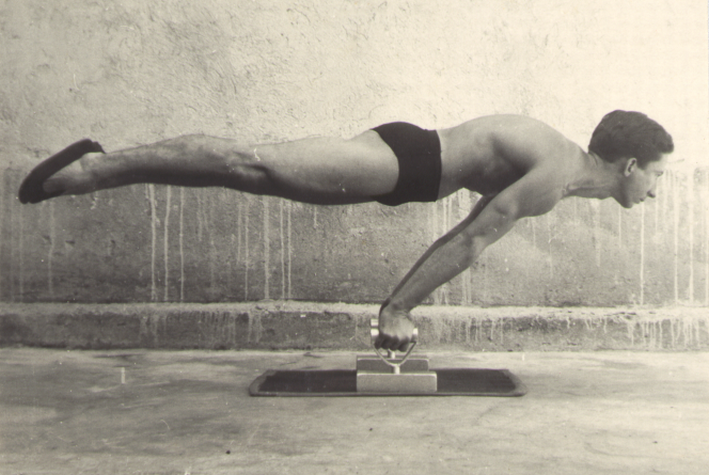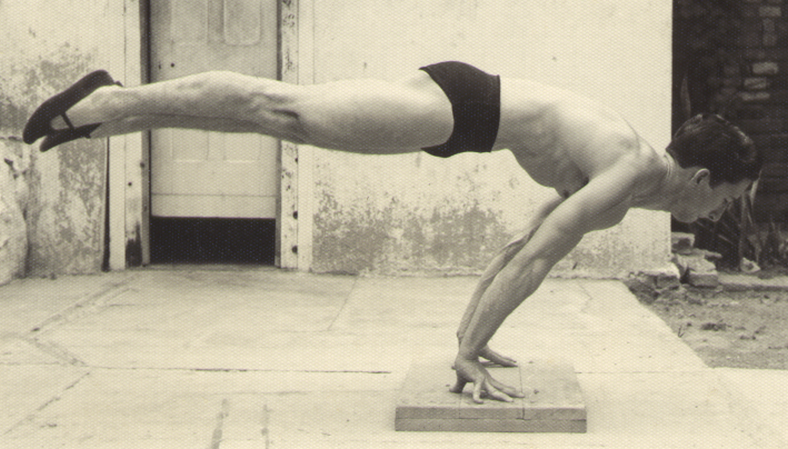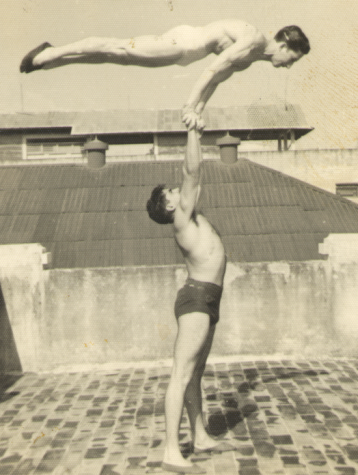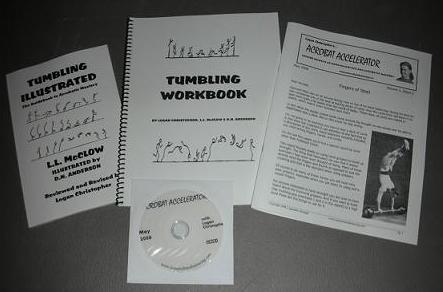A few comments were raised about the hand position in Rafael Guerrero’s planche in a previous post.
Why was he up on the fingertips? Is this necessary to do a planche in good form?
Unless you have hyper-flexible wrists you won’t be able to do a planche with the fingers pointing forwards and flat on the ground. Most people turn their wrists out to the sides to alleviate this sort of strain or come up on the fingers.
But there are other ways to do a planche with the hands not taking as much stress as these other pictures by Rafael show. You can do it on some sort of parallel bars.

Or completely on the fingertips.

Even in a hand-to-hand balance.

But if you do have the wrist flexibility you can do it on flat ground with the palms flat on the ground and facing forward. In the True Art and Science of Hand Balancing the chapter on planches showcases W.H. Mering doing just that.
And if you’re seeking to build incredible strength like these planches show I have an important announcement later this week. Stay tuned!
Good Luck and Good Hand Balancing,
Logan Christopher
Why was he up on the fingertips? Is this necessary to do a planche in good form?
Unless you have hyper-flexible wrists you won’t be able to do a planche with the fingers pointing forwards and flat on the ground. Most people turn their wrists out to the sides to alleviate this sort of strain or come up on the fingers.
But there are other ways to do a planche with the hands not taking as much stress as these other pictures by Rafael show. You can do it on some sort of parallel bars.
Or completely on the fingertips.
Even in a hand-to-hand balance.
But if you do have the wrist flexibility you can do it on flat ground with the palms flat on the ground and facing forward. In the True Art and Science of Hand Balancing the chapter on planches showcases W.H. Mering doing just that. Check out the book for more.
If you’re seeking to build incredible strength like these planches show I have an important announcement later this week. Stay tuned!
Good Luck and Good Hand Balancing,
Logan Christopher









